What is a Bioscrubber filtrating system?
A Bioscrubber combines the functionalities of a biofilter and a scrubber to efficiently remove pollutants. The principle of operation of the bioscrubber consists in using a biological activator to confirm the pollutants into carbon dioxide. In addition to ensuring high performance in reducing odor content in the exhausted air, due to its reduced size structure and small footprint, the bioscrubber can be used when limited space prevents the use of other biological technologies.
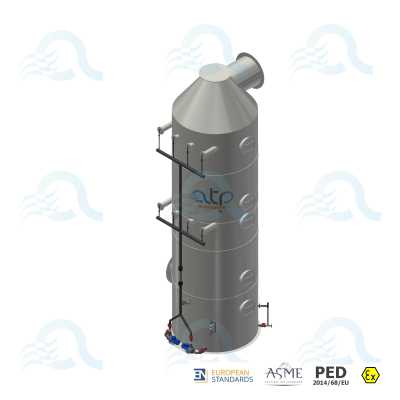
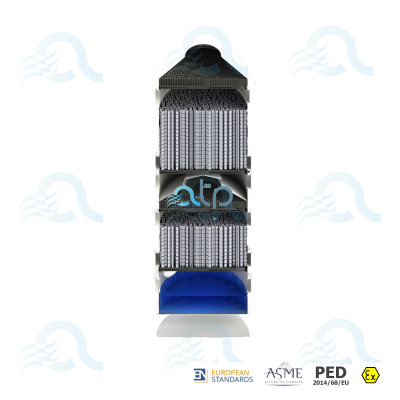

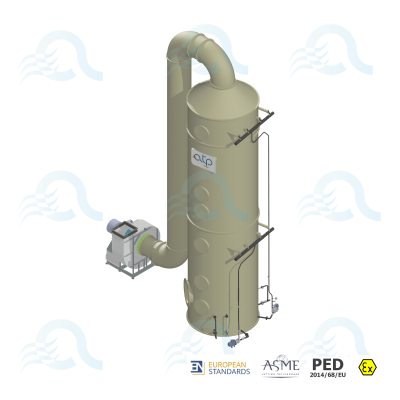
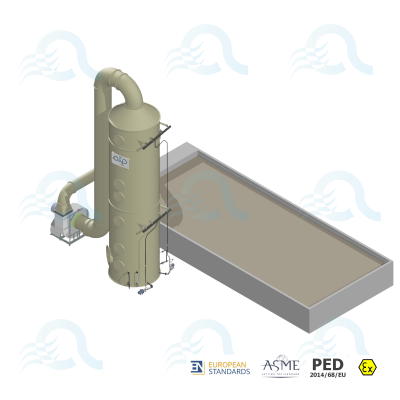
How does it work?
The gas containing the pollutants enters the column and it moves upward through the washing liquid in countercurrent, resulting in the absorption of the particles along with oxygen.
During this process, the pollutants pass to the liquid phase and are utilized by the biomass contained in the scrubbing liquid as nutrients and are consequently converted into carbon dioxide and water.
The reactor is packed with a high-specific-surface-area material that promotes adhesion of the microorganisms.
Periodically, small amounts of biomass are purged, and the water tank is replenished. The clean gas passes through a demister to remove any droplets of liquid, and then it leaves the tower from the top.
Which problem can sort it out?
The ATP Bioscrubber is designed to effectively address the problem of removing odors and pollutants from the air. It is especially useful in meeting environmental regulations while ensuring lower operational costs and a smaller spatial footprint, making it suitable for facilities with limited space.

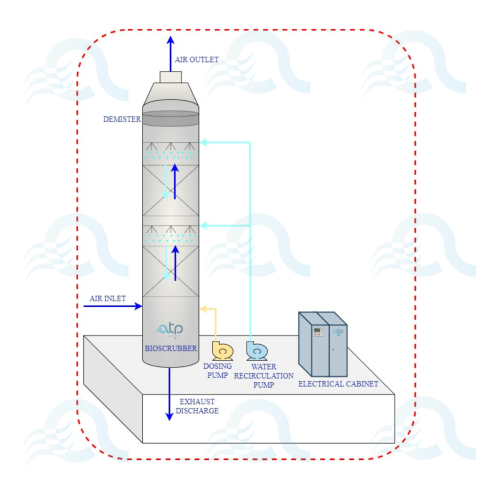








![ISO 9001 [Italy] ISO 9001 [Italy]](https://atpenvironment.com/wp-content/uploads/elementor/thumbs/ISO-9001-Italy-1-e1734709424454-qysjxm32zf8e8mhshe2a1tecm8cbvnzg0wb4e904dc.jpg)